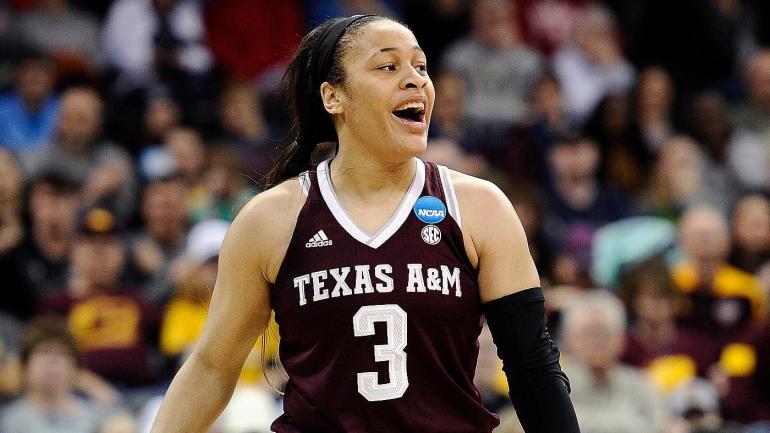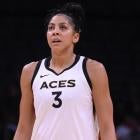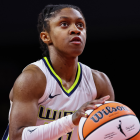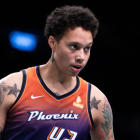
Most of the talk centered around the 2020 WNBA Draft is focused on likely No. 1 overall pick Sabrina Ionescu. However, there are several other players with the potential of making a huge splash at the pro level, one of which being Texas A&M junior guard Chennedy Carter. Last week, Carter announced on Twitter that she was foregoing her senior year of college to enter the draft, becoming the third player in this class to do so. She's a three-time All-American, set a school record for most points scored in a single game (46 points), and ranks second in scoring in program history in just three seasons in college.
Projected as a high lottery pick, Carter's elite scoring and ability to single-handedly take over games makes her the type of player who could turn a franchise around immediately. Before the WNBA Draft on April 17, here's a breakdown of her play and what she can bring to a number of teams in the league.
Scoring
Carter is a walking bucket. She averaged 20 points per game all three seasons at Texas A&M, and in six NCAA Tournament games averaged 31 points, which ranks third all-time among players who have appeared in at least five March Madness games. Her elite handles mixed with her ability to score at all three levels makes her essentially unstoppable on offense.
Carter's breakout game happened in her sophomore year in the Sweet 16 against Notre Dame and their deep team full of eventual draft picks. Carter went toe-to-toe with Fighting Irish star Arike Ogunbowale and put up 35 points in the loss.
It was the perfect example of what Carter can bring. She can score at will, regardless of who is guarding her, but it may not be all that efficient, as it took her 34 shots to reach 35 points. She's nearly impossible to guard one-on-one, and has sneaky quickness to beat you to the rim. That game was the high point of Carter's college career, and after an ankle injury sidelined her for a month in her junior year, she averaged a career-low in points (21.3), 3-point shooting (25.3 percent) and free throw attempts (4.7). Ankle injury aside, though, Carter's game still makes her an enticing high draft pick with a lot of potential.
In order for her to be most effective, she needs to have the ball in her hands. She was often the sole source of offense for the Aggies throughout college, having the third-highest usage rate of any player in the nation (37.2 percent), and can score in a variety of ways in the pick and roll. At 5-7 she'll be a bit undersized for a starting point guard in the league, but her strength to get to the rim and finish through contact makes up for her small stature.
Taking shots has never really been an issue for Carter in college, as her 19 shots per game ranked third in the nation, but her effective field goal percentage (45.2 percent) needs some work. She has a tendency to take ill-advised shots instead of making the smart play, which brings her percentages down. Still, though, in the WNBA last season, that effective field goal percentage would have put her among the likes of Courtney Williams, Diamond DeShields and Jewell Loyd, the latter two of which were All-Stars in 2019.
If there's an area where she needs the most improvement with her shooting it's from beyond the arc. It's more a need for her to return to form, as Carter shot above 35 percent from deep in her first two years in college. The ankle injury in her junior year likely played a role in her shooting an abysmal 25.3 percent from deep, and if she's able to find her shot from long range again, she'll be a consistent threat from 3-point range at the next level.
Playmaking
Carter's a natural-born scorer, which means her duties as a playmaker often get put on the back burner. In her junior year, she averaged just 3.5 assists per game, and while her scoring will make a lottery team very happy on draft night, she'll need to work on her ability to get others involved on offense. There are times where she holds onto the ball too long and misses an open teammate either in the post or on the wing who had a good look at a high percentage shot.
When she's running the break on this play, Kayla Wells (No. 11), who shot 41.5 percent from 3-point range is in great position to get a shot off. Instead, Carter opts to take it herself into the defense without even looking to pass the ball. With the defense fully committed to her, kicking it back out to Wells would've been the smart play:
A couple plays later in that game, Carter did the same thing. Dribbling into three defenders while two teammates stood open on the wings. Both plays resulted in fouls, but Carter is a 74 percent free-throw shooter in her college career. It's great that she's able to draw fouls, but she needs to get her percentage up from the line to make that a more valuable option on offense for her.
Carter's instinct is to score first, pass second, and while that's been effective for her throughout college, she needs to find more of a balance at the pro level. This might be a situation where her playmaking will thrive in the league when she's surrounded by other pro-level talent, because she has shown the ability to make the extra pass to an open teammate, or hit a cutter on the way to the basket. She has the tools and potential to become an above average passer in the league, as long as she shows a willingness to develop that part of her game.
Defense
At one end Carter may sink a mid-range shot in a defender's face, but then get scored on right after that. She has a tendency to lose who she's guarding on the defensive side of the ball, which oftentimes results in a made shot. In order for her to not be a complete liability on that end of the floor, she'll need to communicate more with her teammates when she's thrown into switches, and stay locked in defensively so she's not leaving someone open.
Carter gave up 1.021 points per possession when thrown into a screen per Synergy Sports. Sometimes she was able to anticipate the screen and switch or get around it, other times there was a lack of communication which resulted in easy shots for opponents:
Carter can become a passable defender, there are plays where you can tell she's completely locked in, and is moving her feet to stay in front of defenders. She just needs to reach that on a consistent basis so she's not doing more harm than good to her team by putting in minimal effort on defense.
Fit in the WNBA
In our latest mock draft, Carter is slated to go No. 4 overall to the Atlanta Dream. The Dream added Courtney Williams to their backcourt in the offseason, and while she can score from basically anywhere on the floor, the addition of Carter would inject some much needed offensive firepower to this team. Last season the Dream owned the worst record in the league (8-26), and during the offseason, lost franchise star Angel McCoughtry to the Las Vegas Aces in free agency.
With the start of a new era in Atlanta, Carter could become the centerpiece of the Dream's offense. She'll also have Williams, who only has four years of pro experience to her name, to create a formidable offensive duo with. There's no guarantee that she'll be drafted to Atlanta, but regardless of where she ends up, her ability to score in a number of ways can have an immediate impact on any team. Carter has the makings of becoming a star just based on her scoring ability alone. She needs to develop her playmaking skills and defense, but the pros far outweigh the cons in selecting her high in the draft.
At worst, Carter's a high usage scorer capable of averaging 20 points a game who can come through in clutch situations. At best, she's a dynamic offensive player who can create for herself and others, and is a passable defender. Either way, she's a can't-miss prospect and has the potential to have a very long career in the WNBA.






















